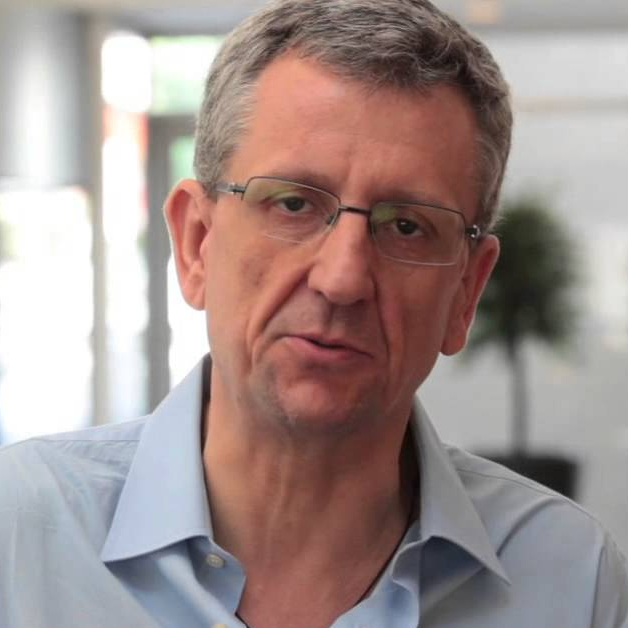Plenary Sessions Auditorium Bordeaux

Chairman
Roy Chua, Founder & Principal, AvidThink
Roy Chua is Founder and Principal at AvidThink, an independent research and advisory service formed in 2018 out of SDxCentral's research group. Prior to co-founding SDxCentral and running its research and product teams, Roy was a management consultant working with both Fortune 500 and startup technology companies on go-to-market and product consulting. As an early proponent of the software-defined infrastructure movement, Roy is a frequent speaker at technology events in the telco and cloud space and a regular contributor to leading online publications. A graduate of UC Berkeley's electrical engineering and computer science program and MIT's Sloan School of Business, Roy has 20+ years of experience in telco and enterprise cloud computing, networking and security, including founding several Silicon Valley startups.
In overture of the Congress, The Global IP Assembly gathers some of the most renowned experts from Telecom Service Providers
They discuss aspects of what they see for IP going forward
- API-fication, disaggregation, programmability
- Increasing value and decreasing costs: what strategies are needed, what technologies can help (AIOps, virtualization, white box). Does SRv6 help?
- Big, bigger, biggest data: impact of AI training, AI inference, large multimodal dataset movement, hybrid clouds
- Managing complexity: multi domains, multi layers, multi technologies — how to manage, troubleshoot?
- Quantum and classical networks: interplay and considerations - is it too early or is the time now?
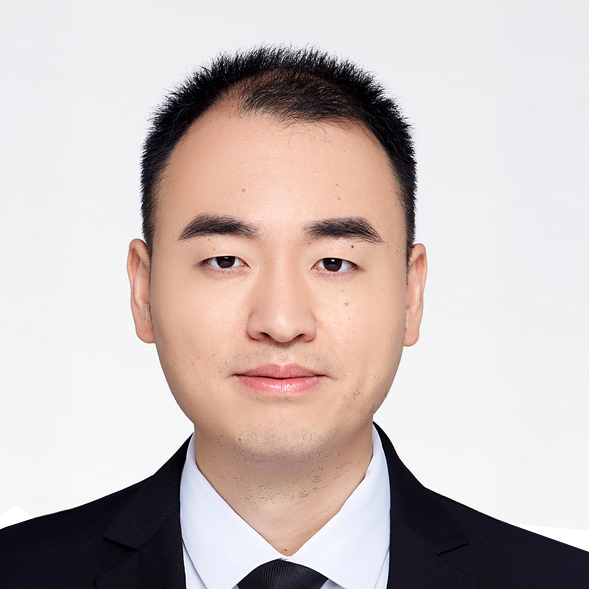
Jin Minwei, Chief Expert of Metro Router Solution, Huawei Technologies
Jin Minwei joined Huawei in 2004, from 2006 to 2016, he was responsible for designing high-level solutions for routers in global carrier networks, from 2017 to 2019, he worked in Huawei Europe Research Center, responsible for solution innovation for European carrier transformation, during this period, he experienced the whole process of global carrier network migration from traditional networks to future networks. He also led the design of the CloudMetro solution and introduced new technologies such as segment routing and telemetry into operators' metro and 5G bearer networks. Since 2019, he has been responsible for researching next-generation technologies and designing product solutions for Huawei routers.
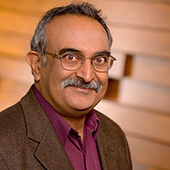
Kireeti Kompella, Juniper Networks
Kireeti Kompella started off in the Routing area in 1998 working in Traffic Engineering. He moved on to MPLS and MPLS applications (VPNs, VPWS/VPLS, Entropy Labels, GMPLS, Seamless MPLS and more TE as a sample). In 2015, he introduced the notion of Self-Driving Networks, a vision of networks that run themselves – provisioning, optimizing, reacting to changing network conditions, and maintaining a high level of service both within the network as well as for its customers. He presently works on "Services as Code" – a fully customizable platform for service orchestration. Kireeti has been at Juniper for nearly 28 years (with a short break at Contrail Systems) and has held multiple positions there. He is currently SVP and Chief Engineer of the WAN BU. He holds a PhD in Computer Science from the University of Southern California, as well as Master's and Bachelor's degrees from the Indian Institute of Technology, Kanpur.

Michael Beesley, CTO SP Networking, Cisco
Michael is Vice President and CTO of the Cisco Networking Group leading technical direction, architectural transition, solution architecture and roadmap planning for Cisco’s SP networking portfolio. He drives Cisco’s leadership position in core, edge, aggregation and access routing, mobility, cable, optics and optical networking and automation software solutions in collaboration with partners, customers, internal cross-functional leaders and the industry in reinventing the mass-scale networks of the future. Prior to rejoining Cisco in February 2018, Michael was co-founder and CTO of Skyport Systems, developing cloud managed, on premise, virtualized compute platforms with security, ease of use, and always-on analytics built in. Before Skyport, Michael served as engineering CTO at Juniper Networks, leading new architectures, embedded software evolution and silicon roadmap development across the router, switch and Wi-Fi portfolios. Michael has held many senior technical leadership roles at both Cisco and Juniper and was a key contributor to many successful product lines and technology including C7200, C12000, M40, T640, JUNOS, ASR1K and IOS-XE. Michael holds CS and Math degrees from Trinity College, Dublin, is a named inventor on many networking related patents, is a frequent speaker at industry events, and often shares his thoughts through Twitter, LinkedIn and blogs.

Jürgen Hatheier, International CTO, Ciena
Jürgen Hatheier is a forward-thinking technology executive serving as Chief Technology Officer for EMEA & APAC at Ciena. In this pivotal role, Jürgen spearheads the technological vision for these dynamic regions, ensuring Ciena's portfolio not only meets the current demands of the market but anticipates the future landscape driven by Artificial Intelligence. He is responsible for strategically aligning Ciena’s innovative solutions with the evolving business imperatives of customers, leveraging emerging technologies to unlock new growth opportunities. Where others perceive complexity in today's volatile and rapidly changing markets, Jürgen identifies fertile ground for innovation. He and his team of leading technologists are architects of disruptive business models and intelligent network architectures,empowered by the transformative potential of AI. By expertly applying cutting-edge technologies, including AI-driven network automation, advanced analytics, and machine learning, Jürgen is committed to building a future where sustainable connectivity acts as a catalyst for progress, fostering equal opportunities and enhancing lives globally. Jürgen brings to Ciena a wealth of international experience gained across North America, Europe, and Asia, coupled with over two decades of deep expertise in the telecommunications sector. His profound understanding spans software, hardware, and network operations, providing him with a unique and holistic perspective on navigating the complexities of the digital age. Prior to Ciena, Jürgen held key leadership positions in product management and R&D at ARRIS and Technetix, where he consistently delivered innovative solutions for tier-1 network operators worldwide. Jürgen's academic foundation is built upon a Master’s degree in Business Administration and Economics from Johannes Kepler University Linz and a Bachelor’s degree from HTBLA Leonding in Austria.
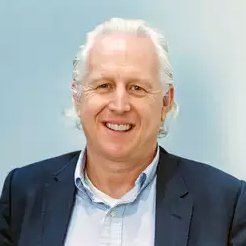
Wim Henderickx, CTO IP Division, Nokia
Mr. Wim Henderickx is the CTO of the IP Division at Nokia, based in Belgium. He is active across various domains, including service providers, enterprise networks, and hyperscalers. With over 30 years of experience in the communications and networking industry, Mr. Henderickx is a frequent speaker at technical conferences worldwide. He is actively involved in standards development organizations and contributes to multiple open-source projects. He holds a Bachelor’s degree in Industrial Engineering (Data Communications) and a Master’s degree in Economics. Mr. Henderickx is also a Bell Labs Fellow.
Reviewing the role of networking for AI infrastructures and showing case industry examples related to this critical area of evolution.

Michael Ploeg, PLM Manager Data Center, Nokia
Michel is a Product Line Manager at the Network Infrastructure business group for the EMEA region and is based in the Netherlands. He is leading the Datacenter product management team, in addition his other focus is programmability and virtualization within the 7x50 product line and Nokia SR OS router software. He has over 25 years of experience in the networking industry with roles varying from network engineer to designer/architect.
Networking enterprises are not only leveraging AI technologies in their products, for the benefit of their customers, but are also transforming their own internal processes. Describing a first-hand experience with adopting AI for software engineering – including its potential and pitfalls.

John McKinnon, Vice President, Software Engineering R&D, Ciena
John McKinnon currently serves as Vice President of Software Engineering for the Navigator Network Control Suite at Ciena. In this role, he is responsible for overseeing the design, development, verification, and support of the complete portfolio of Ciena’s SDN network management software solutions, intelligent applications, and network design tools. John has held various senior software design, product management, and business development positions in his 40 years tenure at Standard Telecommunications plc, Bell-Northern Research, Nortel Networks and now Ciena. This included software leadership roles in Transmission Networks, Optical Networks, Data Networks and eBusiness product groups covering all aspects of element, network, service management tools and applications. John holds a Bachelor of Science in Engineering from University College London, UK and is a Chartered Engineer with the IEE.
The rapid growth of Artificial Intelligence (AI) and Machine Learning (ML) workloads is driving the demand for low latency, low loss, and resilient network fabrics to connect the GPU servers. Global Load Balancing (GLB) for AI/ML fabrics can help to avoid congestions end-to-end which cannot be achieved by traditional load balancing techniques such as random hashing, dynamic load balancing, etc.

Kevin Wang, Distinguished Engineer, Juniper Networks
Kevin Wang is a Distinguished Engineer at Juniper Networks, working in the BGP and MPLS areas for 16 years. His major innovations include BGP rib-sharding, FIB Compression, BGP Self-diagnostics, AI/ML fabric Global Load Balancing, and BGP Deterministic Path Forwarding. He actively participates in the IETF and is a coauthor of RFC-9107 as well as a few Global Load Balancing related Internet drafts. Before joining Juniper in 2008, he worked for Airvana, Axiowave Networks, Cisco, in the areas of 3G Wireless, IP/MPLS protocols, and Content Delivery.
Providing an overview of the different types of ethernet-based networks for AI and their respective challenges. Evaluating how existing ethernet/IP principals and evolution are used. Covering how SONiC plays important role in AL backend and frontend network.
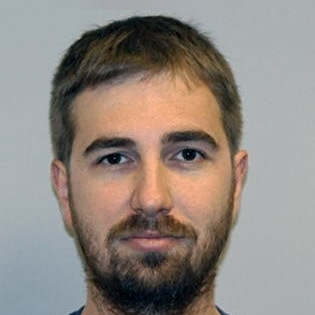
Jiri Chaloupka, Principal Engineer, Cisco
Jiri is a Principal Engineer at Cisco with 15+ years experience and deep technical expertise driving new architecture and innovations in networking through career path from post-sales, to sales, to technical marketing. His main focus is architecture and innovation in AI front- and back-end networks, open networking with SONiC, as well as continuous focus on BGP based Overlay Services solution (IP, Ethernet) such as EVPN and programmable transport based on IP (SRv6, VXLAN) or MPLS. Jiri is an advisor and architect for large scale end-to-end Service Provider, Data Center, and Cloud networks globally. Jiri is regularly recognized as a top speaker at technical conferences.
Sharing experiences of building a Gen AI based assistant for VoLTE and VoNR operations. Discussing the closed loop automation models and their role with predictive and Gen AI to build autonomous operations of mobile voice.

Azhar Sayeed, CTO, ng‑voice
Azhar is the Chief Technology Officer (CTO) at ng-voice responsible for Engineering, Products and Technology for the company. Azhar has over 30 years of experience with Telecoms technologies. Most recently, he was the Global Chief Technologist and Architect at RedHat, where he worked with operators worldwide on cloud and virtualization strategies and deployment. Prior to RedHat, Azhar also spent 17 years at Cisco, where he led software product management, engineering, and solution delivery teams. Here at ng-voice, he currently leads our product portfolio, product delivery, product vision and the technology stack.
GenAI powered autonomous agents are the key building block. Explaining what they are, how they can be used, real use cases, and how they truly enable a solid path towards the Autonomous Network implementation.
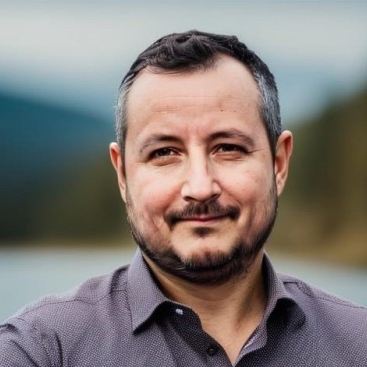
Javier Antich, Product Manager, Cisco
Javier Antich has been in the Networking Industry for 25 years. He is currently Principal Product Management Engineer in the Provider Connectivity group at Cisco, where he is connecting the dots between networking, automation, and AI. He has been researching the Art of the possible with LLMs in Networking with the Industry's first autonomous network troubleshooting agent (Anetta.ai). Javier has extensive experience in machine learning, analytics, network observability, network automation, and Telco-grade networking. Javier is also an accomplished author of the best-selling book “Machine Learning for Network and Cloud Engineers”. He holds a BS Degree in Telecommunication Engineering from the ETSIT at the Polytechnic University in Valencia, an Executive MBA at the IE Business School, and a Data Science and Deep Learning master’s degree from the Madrid Institute of IoT.
Introducing the architecture and concept of AI WAN and the evolution of key AI WAN technologies.

Xu Huan, VP of Data Communication Product Line, Router Domain, Huawei Technologies
Examining the critical parameters necessary to validate and optimize AI data center networks for enhancing fabric efficiency, ensuring optimal GPU utilization, and minimizing job completion times.

Ciprian Matei, Product Manager, CSG Wireline NT and Services, Keysight
Ciprian Matei is Product Manager at Keysight Technologies, specializing in networking and wireless testing solutions for 4G/5G Access and Core. With over 20 years of experience in telecom, product management, and engineering leadership, he has contributed to multiple innovations in network testing, timing measurements for data centers, and AI infrastructure testing. Ciprian has led cross-functional teams, working closely with global customers, and holds a degree in Telecommunications from the Polytechnic University of Bucharest.

Carsten Rossenhoevel, Managing Director, EANTC
Carsten Rossenhövel is Managing Director and Co-Founder of EANTC AG (European Advanced Networking Test Center). Based in Berlin, Germany, EANTC is a test lab specializing in telecommunication technologies and offers vendor-neutral network testing services for manufacturers, service providers, and enterprise customers. In this role, Carsten has over 20 years of experience in telecommunication networks testing and is responsible for EANTC's business development and marketing. His technical areas of expertise include Network Functions Virtualization and transport network solutions.
Exploring an innovative, real-world IP/MPLS network digital twin use case that empowers service providers to improve network planning speed and efficiency by enabling “what-if” scenarios to determine how various changes would impact network performance.

Bill Kaufmann, Director of Product Management, Assurance and Analytics, Blue Planet
Bill Kaufmann has been working with global Communication Service Providers for over 20 years as a Product Management Director for IP/MPLS routing hardware, SDN orchestration platforms, and network management and assurance systems. He currently leads the network assurance and analytics platform management at the Blue Planet division of Ciena.
As a leading Canadian telecom provider, Telus is transforming the network and control software to be self-healing, self-configuring, self-organizing, and self-optimizing, ultimately achieving autonomy.
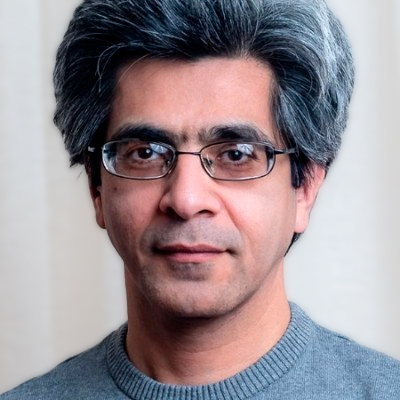
Ali Tizghadam, TELUS Fellow
As a TELUS Fellow and Chief SDN/Automation Architect, Ali leads the network softwarization strategy for TELUS. He is the architect of TINAA, TELUS’s AI-driven SDN brain, and is currently spearheading the company’s evolution toward a self-driving network, leveraging the TMF AN framework.
Network management becomes more adaptive and intelligent, and moves towards a highly orderly autonomous network. AI for network includes three agents: change agent, optimal agent, fault agent.
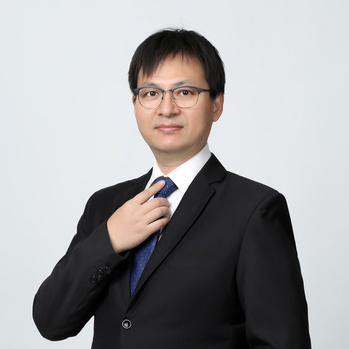
Wu Qin, Network Architect, Huawei Data Comm
Qin Wu currently serves on the IAB and is one of the organizers of the NEMOPS workshop. He has many years’ experience working in the IETF contributing to the development of YANG models and to the refinement of YANG. He currently focuses on driving digital twin networking and Network and Application collaboration and chairs SCONE Working group in IETF WIT area. In addition, he also helps form IVY, GREEN, NMOPS WGs,etc in IETF OPS area and has chaired several IETF working groups intended to support the aims and ambitions of network operators, and is a member of the IETF’s Operations Directorate.

Moderator
Azhar Sayeed, CTO, ng‑voice
Azhar is the Chief Technology Officer (CTO) at ng-voice responsible for Engineering, Products and Technology for the company. Azhar has over 30 years of experience with Telecoms technologies. Most recently, he was the Global Chief Technologist and Architect at RedHat, where he worked with operators worldwide on cloud and virtualization strategies and deployment. Prior to RedHat, Azhar also spent 17 years at Cisco, where he led software product management, engineering, and solution delivery teams. Here at ng-voice, he currently leads our product portfolio, product delivery, product vision and the technology stack.

Prof. George Polyzos, Co-founder ExcID and Chair DIA
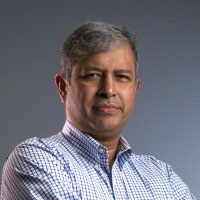
Ananda Sen Gupta, Managing Director, Nagarro

Michael Ploeg, PLM Manager Data Center, Nokia
Michel is a Product Line Manager at the Network Infrastructure business group for the EMEA region and is based in the Netherlands. He is leading the Datacenter product management team, in addition his other focus is programmability and virtualization within the 7x50 product line and Nokia SR OS router software. He has over 25 years of experience in the networking industry with roles varying from network engineer to designer/architect.

Morning Chairman
Carsten Rossenhoevel, Managing Director, EANTC
Carsten Rossenhövel is Managing Director and Co-Founder of EANTC AG (European Advanced Networking Test Center). Based in Berlin, Germany, EANTC is a test lab specializing in telecommunication technologies and offers vendor-neutral network testing services for manufacturers, service providers, and enterprise customers. In this role, Carsten has over 20 years of experience in telecommunication networks testing and is responsible for EANTC's business development and marketing. His technical areas of expertise include Network Functions Virtualization and transport network solutions.
Exploring Tuckell's network deployment and evolution strategies, with a special emphasis on the application of SRv6 in real network environments and the benefits that SRv6 brings.
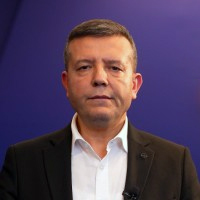
Mehmet Durmus, IP/MPLS Core and Data Center Networks Associate Director, Turkcell
Mehmet Durmus has been serving as the Associate Director of Turkcell IP/MPLS Core and Data Center Networks since 2023. In this role, He is responsible for the Strategic Investment Planning and Network Design of Turkcell's IP Backbone, Backhaul, and Data Center Networks, ensuring they are optimized for performance, scalability, and future technologies
Limitations of IPv4 addressing and how IPv6 lays a strong foundation for a more simpler network operation. Practical aspects of SRv6 deployment, examining the different paths of greenfield deployments and complex brownfield environments.
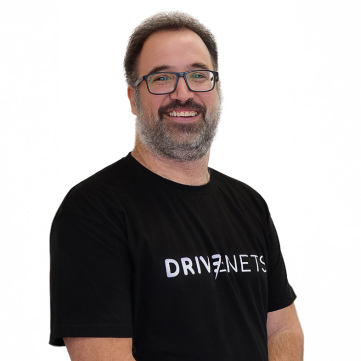
Juan Rodriguez, Senior Sales Engineer, DriveNets
Juan brings over 20 years of experience in the networking industry providing technical leadership for network innovation projects and focusing on tier-1 service providers across Europe and Latin America. With more than 16 years at Telefonica, Juan focused his work on end-to-end network architectures with an emphasis on network innovation and virtualization. By 2018, Telefonica created their ‘Future Networks Lab’ where Juan evaluated many different vendors for integrating into a disaggregated network infrastructure. Currently, at DriveNets, Juan serves as a Senior Sales Engineer and is focused on deploying DriveNets innovative networking technology.
IPv6 has a lower average delay than IPv4, and the difference is growing from the end user's point of view. This IPv6 modification is historic. An increasingly significant benefit for businesses that prioritize user experience is IPv6 deployment.

Xiao Xipeng, Head of Datacom Standard & Industry Development (SID), Huawei Europe
Dr. Xipeng Xiao has been with Huawei Datacom since 2006. He is currently head of European Datacom SID, and previously, Chief Engineer of the Network Solution Sales. In these roles, he works extensively with European operators. Prior to Huawei, he was Director of Product Management at Riverstone Networks (now part of Nokia) and Redback Networks (part of Ericsson) in Santa Clara USA. He was Senior Manager at Global Crossing where he deployed and managed the MPLS network. Dr. Xiao is author of 4 RFCs and 1 book. Dr. Xiao is co-chair of IETF v6ops (IPv6 Operations) WG. He also serves as steering committee member of the MPLS World Congress.
IX.br is making significant progress in evolving its network infrastructure by incorporating and deploying advanced technologies such as EVPN (Ethernet VPN) and SRv6 (Segment Routing over IPv6).
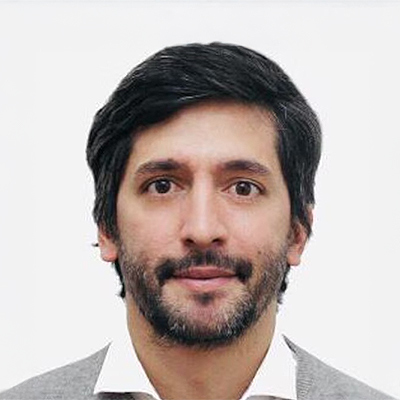
Diego Achaval, Product Line Manager, Nokia
Diego is a networking technology enthusiast with more than 15 years of experience in the realms of the network design, network architecture, and lately, product management. Currently working as a Principal Solutions Engineer and PLM in the IP Networks SW Product Management group at Nokia, he is responsible for both the introduction of new technologies to our customers (via demos, and POCs) and for the development of new features in the areas of MPLS, Segment Routing, and PCEP. When he is not working, he enjoys drinking a proper espresso, travelling a bit, being bad at playing tennis, and of course being a father to a 2yo toddler!
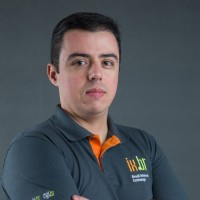
Fabio Pessoa Nunes, Network Architect, IX.br
Fabio Pessoa Nunes is M.Sc. in Electrical Engineering at Universidade de Campinas (UNICAMP) and Bachelor of Computer Science at State University of Londrina (UEL). He has more than 16 years of experience in designing and deploying networks, and has been working at IX.br/NIC.br for more than 11 years, being in charge of numerous technology evolutions in the IXPs. Currently Fabio is Network and Systems Supervisor at IX.br’s Engineering team.
MPLS to SRv6 migration process can be very challenging. For example, equipment vendors typically provide SRv6 support for IS-IS only, which implies additional IGP migration, when existing IGP is OSPF. Another challenge is migration of Layer 2 services, like E-Line or E-LAN, implemented using legacy Layer 2 technologies, like LDP based Layer 2 circuits or VPLS (Virtual Private LAN Service). Again, equipment vendors typically provide SRv6 support for Layer 2 services based on EVPN (Ethernet Virtual Private Network).
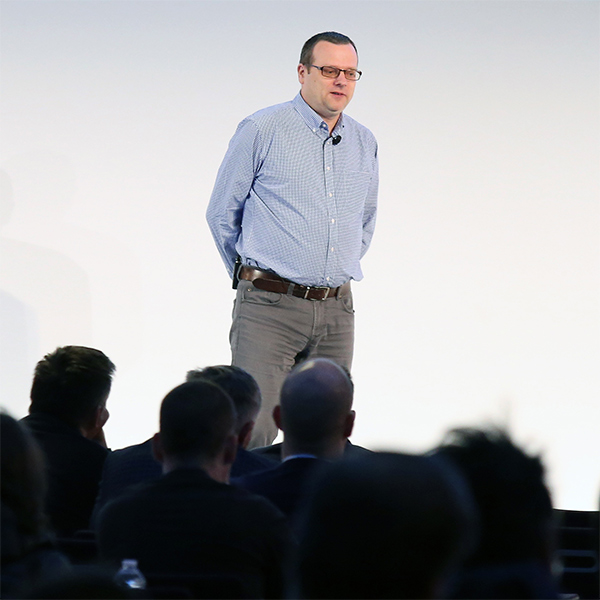
Krzysztof Grzegorz Szarkowicz, AWAN PLM, Solutions Architect, Juniper Networks
Krzysztof Grzegorz Szarkowicz is a Solution Architect at Juniper Networks, concentrating on mobile transport solutions, and has been working with the networking industry 20+ years, delivering projects at many operators world-wide. Before joining Juniper Networks in 2007, he worked with Hewlett Packard Labs, Telia Research, Ericsson, and Cisco. During that time he gained valuable hands-on experience at various aspects of networking, culminating in gaining CCIE-SP and JNCIE-SP certifications. He is co-author of the O’Reilly book “MPLS in the SDN Era", by Antonio Sánchez-Monge and Krzysztof Grzegorz Szarkowicz, as well as “Day One: Configuring Segment Routing with Junos” by Julian Lucek and Krzysztof Grzegorz Szarkowicz. At present, he is active contributing member of O-RAN WG9 (Open X-haul Transport) co-authoring WG9's architectural documents.
As Service Provider network infrastructure evolution towards unified Segment Routing transport continues worldwide, is there a common deployment model? Exploring three models: centralized with SR-TE, distributed with Flex-Algo and a hybrid approach. Practical SR-MPLS / SRv6 design tradeoffs will also be discussed, with an emphasis on learnings from worldwide deployments.

Jan Straznicky, Senior Director, Product Line Management, Ciena
Jan Straznicky has over 25 years of experience in networking & telecommunications and is currently the Senior Director of Product Line Management at Ciena. In this role, he leads the team defining Ciena’s IP Networking Software Strategy and product roadmaps for Ciena’s IP Network Operating System (SAOS 10.x), Subscriber Management/BNG (Benu Acquisition) and Enterprise Cloud Edge (Vyatta Acquisition). Ciena’s SAOS 10.x IP Network Operating System runs across the entire portfolio of Routing platforms. Prior to joining Ciena, Jan spent 16 years with Nokia (via Alcatel-Lucent) in various roles spanning Customer Engineering Support, Solutions Engineering and Consulting Engineering. His final role was Senior Director of Consulting Engineer in the IP Business Division responsible for the team driving Technical Business Development for Nokia’s IP products across the North American Mobile Operator segment. Jan’s has spent his career applying the broad concepts of IP networking to build deployable and successful end-to-end solutions for customers. Jan has a B.Eng from Carleton University and an MBA from Queen’s University.
This lecture will compare the business values of SRv6, MPLS SR, and MPLS, and introduce the evolution and deployment of SRv6 on the live network.

Ka Zhang, SR Protocol Technology Senior Expert, Huawei Technologies
Ka Zhang is now SR Protocol Technology Senior Expert and has 17+ years research and development work in MPLS and SRv6 at Huawei. She has designed and developed the IPv6 Enhance technology such as SRv6 Policy, SRv6 Compression, Network Slicing etc. and is familiar with the implementation and deployment of Srv6. She is author of 5 IETF drafts.
- AI training backends with SRv6 deterministic path placement
- Enhancing AI inter-clusqter connectivity
- End-to-end SRv6 from cloud front-end to egress internet peering
- IPM hardware connectivity
- From hardware to NaaS
- TITAN Swisscom network design
- Circuit-style services for deterministic networking
- SRv6 MUP progress and update

Clarence Filsfils, Cisco Fellow
Clarence Filsfils, a Cisco Systems Fellow, has a 20-year expertise leading innovation, productization, marketing and deployment for Cisco Systems. Trusted and respected by key decision makers across major WEB/OTT, SP’s and large Enterprises, Clarence enjoys working with these operators to listen to their needs and requirements, and then get things done from product design to deployment. He invented the Segment Routing Technology (over 40 patents) and is leading its productization, marketing and deployment at record execution speed. For this contribution, he received the Pioneer Award - Cisco's most prestigious award honoring innovative engineering. The award celebrates engineering contribution that brings growth in new markets, redefines current markets, and provides game-changing improvements to engineering productivity. Previously, Clarence invented and led the Fast Routing Convergence Technology (over 30 patents) and was the lead designer for Cisco System’s QoS (20 patents) and large-scale IP/MPLS deployments. Clarence is a regular speaker at leading industry conferences. He holds over 130 patents and is a prolific writer, either in academic circle (Sigcomm 2015), or standard (8 RFC’s, 20 drafts on standard’s track) or books. Clarence holds a Masters in Management from Solvay Business School and a Masters of Engineering in Computer Science from the University of Liege.

Rita Hui, Principal Software Engineering Manager, Microsoft
Rita is a Principal Software Manager in Microsoft. She leads the SONiC Chassis work group in the SONiC community, developing and deploying chassis routers with SONiC for the Spine router role in Azure Data Centers. Recently she is also engaged in enhancing SRv6 in SONiC. Prior to Microsoft, she held senior management roles in networking products companies building routers for large scale providers’ MPLS/VPLS/L3VPN networks.

Alexey Gorovoy, Network Engineer, Nebius
Alexey is a Network Engineer with over 15 years of experience across network operations, systems integration, and vendor pre-sales and professional services. He specializes in data center infrastructure, routing and switching, and network security solutions. Throughout his career, Alexey has cultivated a diverse set of skills, combining network architecture, design and implementation, network automation and operations in business-critical environments. Passionate about innovation, Alexey is particularly focused on researching and implementing new network technologies for data center and backbone networks. He also enjoys speaking at industry conferences, where he engages with peers and broader tech communitie.

Rolf Schmid, Senior System Architect for IP Transport Networks, Swisscom
Rolf Schmid is a Senior System Architect for IP Transport Networks at Swisscom. In the past 25 years of his Swisscom career, Rolf has been involved in the design and implementation of various generations of Service Provider networks and services. Today, Rolf is leading the network architecture team of the TITAN project, Swisscom's ambitious initiative to build a converged, state-of-the-art, greenfield SRv6 network in Switzerland.

Michael Valentine, Technology Fellow, Network Architecture, Goldman Sachs
Mike Valentine is Head of Network Product and Strategy at Goldman Sachs. Over his 24 years at Goldman Sachs, he has been on the forefront of new technology borrowing the best from Hyperscaler and Service Provider networks and applying them in the enterprise. He has spearheaded Segment Routing in the enterprise leading early deployments since 2018 and introduced Routed Optical shortly after. Mike’s recent focus has been on Integrated Performance Measurement and advanced network analytics.

Bart Janssens, Senior Specialist Packet Architecture, Colt Technology
Bart Janssens is a Senior Specialist Packet Network Architect for Colt Technology Services. During his 22 years career at Colt Bart has always been part ofand building various network generations following closely the latest industry innovations including driving early proof of concepts. engineering defining Bart is also working on various next generation performance, fault and orchestration OSS platforms supporting Colt’s Digital Infrastructure rapid evolutions.

Akash Agrawal, Technical Director, Rakuten
With 19 years of experience in the networking industry, Akash Agrawal is a seasoned expert in the field of IP engineering. Currently serving as the Director of IP Engineering at Rakuten Mobile, he plays a key role in driving the company’s innovative networking strategies. Akash recently led the successful deployment of the world’s largest uSID-based SRv6 solution, further establishing his expertise in advanced routing technologies and large-scale network transformations. His deep understanding of IP networking and passion for cutting-edge technologies has positioned him as a thought leader in the industry.

Satoru Matsushima, Technical Meister, SoftBank
Since 1999, he has advanced network design using MPLS while developing IP-VPN, distributed IX, and multicast services. Since 2008, his work has focused on IPv4/IPv6 coexistence, later contributing to the MAP standardization—achieving IETF standardization in 2015 and advancing IPv6 adoption in Japan. Since 2016, he has researched SRv6 for 5G mobile backhaul, culminating in its IETF standardization in 2020. In 2021, he proposed the SRv6 MUP architecture to enhance 5G user plane efficiency, furthering his work with SoftBank 5G. He has served as SoftBank Technical Meister and as a 3GPP CT WG4 rapporteur since 2018, and as co-chair of the IETF Distributed Mobility Management Working Group since 2019.

Afternoon Chairman
Roland Thienpont, Director IP Division Product Marketing, Nokia
Presenting the latest trends of SRv6 and the best practices that enable delivering next-generation services granting a high level experience and automating network operations, targeting the network for 5.5G (WBBA Net5.5G).
Announcing the SRv6 Ready Logo Program, accelerating its deployment.

Latif Ladid, President, IPv6 Forum
Latif Ladid is the founder and president of the IPv6 Forum. He is Chair of the IEEE COMSOC IoT subcommittee, chair of IEEE COMSOC 5G subcommittee, co-chair of IEEE COMSOC SDN-NFV subcommittee, Emeritus Trustee, Internet Society - ISOC; IPv6 Ready Logo Program Board and Chair of ETSI IPv6 ISG.
Focusing on the implementation of IPv6 using Mapping of Address and Port with Translation (MAP-T) solutions, highlighting real-world deployment experiences from tier-1 CSPs that have successfully navigated this transition. MAP-T enables CSPs to extend their IPv4 services while paving the way for IPv6 integration, offering a hybrid approach that balances immediate operational needs with future requirements.

Juan P Rodriguez, Sr Director, IP Consulting Engineering, IP Networks, Nokia
Juan Rodriguez is a technology leader at Nokia, providing strategic leadership and technical direction for the evolution of massive-scale networks and next- generation architecture in wireless and wireline applications. With extensive experience in IP Routing (HW/SW) development and execution, Juan is at the forefront of transforming network architectures to meet the demands of an increasingly digital world. As the leader of the IP Consulting Engineering team for U.S. MSO, Major, and Telco (Wireline & Wireless) accounts, Juan blends deep technical expertise with a customer-centric approach to deliver innovative, scalable, and automated IP networking solutions. His work enables Communications Service Providers (CSPs) to unlock new revenue streams and optimize network performance in today’s hyper-connected ecosystem. Juan’s expertise spans Mobile Anyhaul, Broadband Aggregation, Business IP Services, Carrier WiFi, 5G Next-Gen Core, IP Core Routing, and network automation. His passion for end-to-end IP networking solutions and services has positioned him as a key player in driving next- generation network evolution. Since joining Nokia in 2008, Juan has held various technical roles across the Americas Region, contributing to groundbreaking projects that shape the future of networking. He holds a degree in Telecommunications Engineering from PUCMM in the Dominican Republic and is based in Orlando, Florida.
Exploring real-world experience and use cases for seamless integration of IP routing with coherent DWDM, delivering higher performance with operational simplicity — including lessons learned and how to prepare for 800G coherent optics and beyond.

Rafael Francis, Senior Director, Product Line Management, Ciena
Rafael Francis has over 25 years of experience in networking & telecommunications and is currently a Sr. Director of Product Management at Ciena where he leads a team responsible for next-generation routing platforms & strategy. Prior to joining Ciena he was the VP of Product Management for Cyan Inc. where he was responsible for Cyan’s Z-Series packet-optical portfolio and Blue Planet SDN software including its initial launch. Prior to joining Cyan, he also held product management leadership positions at ECI Telecom, Laurel Networks, and FORE Systems. His knowledge and contributions in next-generation networking and its business applications have also been demonstrated through various conference speaking engagements and articles. Rafael has a B.S. in Electrical Engineering from the University of Pittsburgh and an MBA from Carnegie Mellon University.
Covering the standards work related to managing IP+Optical networks with ZR/ZR+ digital coherent optics and delivering real world examples illustrating provisioning and assurance of end-to-end multi-layer services utilizing DCO using open and standards-based methods.

Phil Bedard, Distinguished TME, Cisco
Phil Bedard is a Distinguished Engineer with Cisco Systems focused on service provider network architecture. Phil serves as a lead architect for Cisco's Agile Services Networking and Routed Optical Networking validated solutions covering IP and optical technology for network operators. Prior to joining Cisco in 2017, Phil worked for over 20 years as an engineer or architect at large service providers. Phil also works in standards bodies such as IETF and O-RAN, and serves as a NANOG program committee member.
Starting with an overview of today’s technology and its evolution path. Then discussing the practicalities and some relevant deployments, and the lessons learned.

Bruno de Troch, Director of EMEA PLM IP Routing, Nokia
Bruno has over 30 years of experience in the telecom industry and joined Nokia (then Alcatel-Lucent) in April 2014. He’s heading the EMEA Product Line Management team for Nokia’s IP Routing and Network Automation portfolio, including the 7950 XRS, 7750 SR, 7250 IXR, 7220 IXR, 7210 SAS and 7705 SAR families of routers, the Network Services Platform (NSP), the Fabric Services Platform (FSS) and the Deepfield solutions. This industry-leading portfolio provides service providers and large enterprises with a Smart Network Fabric spanning from access to core. Prior to his current role he was a Technical Lead at Juniper Networks for 14 years, providing guidance to carriers and large enterprises on how to deploy and optimize their IP/MPLS and Carrier Ethernet networks. He holds an MSc in Telecommunications from the Military Academy in Brussels and made it to Captain in charge of the Belgian Armed Forces’ country-wide data network before leaving and joining BT Belgium as a Design Engineer. He is based in Antwerp, Belgium.
Exploring solution innovations, including novel system design to enable full density of coherent pluggables. Presenting field experience of Service Providers and Enterprises deploying IPoDWDM with 400G-ZR/ZR+ and for the first time 800G-ZR/ZR+ pluggables.

Moran Roth, Director, Product Management, Juniper Networks
Moran Roth is a Director of Product Management at Juniper Networks, leading the Access & Aggregation Routing and Optical Solutions teams. In this role, he focuses on Metro solutions for Service Providers and Cloud Providers as well as on IPoDWDM. Before joining Juniper, Moran held several leadership positions in Product Management and Engineering at several networking companies, most recently, managing the long-haul PLM team at Infinera with focus on optical transport solutions for the CSP and ICP segments. He has more than 20 years of experience in the communication industry in large companies as well as startups. Moran holds an MSc. In Electrical Engineering with specialization in photonics.
Detainling our experience in overcoming varied OpenConfig YANG router implementations to achieve successful end-to-end wavelength management at the optical layer pluggable-to-pluggable, simplifying converged network operations.

Robert Friskney, Director, Product Line Management, Ciena
Robert is the L3 and Advanced IP Apps PLM for Ciena’s SDN controller & NMS/EMS, Navigator Network Control Suite (formerly known as MCP). Robert joined Ciena via the Nortel MEN acquisition in 2009. From graduation, he started working in fixed line copper access technologies, SIP VoIP and MPLS before changing to photonic networking for his academic research work. Going back into IP/Ethernet to co-invent PBB-TE (802.1Qay), he was then a prime in the network management solution for this technology and eventually all IP/Ethernet. He shifted to a broader architecture role shaping Ciena’s IP/Optical convergence before handing that off to production, and spent some years directing the company’s 5G mobile solution before returning to the management space for his current role. Robert holds twenty four patents, an MA in Computer Science from the University of Cambridge, UK and an MSc in Telecommunications and EngD in Photonic control planes, both from the University of London, UK.

David Stokes, Head of IP Solutions and IP Portfolio Marketing, Ribbon
David is Head of IP Solutions and IP Portfolio Marketing at Ribbon, he focuses on Ribbon’s IP Routing portfolio and solutions for multiservice backhaul (mobile, fixed, MSO), Enterprises, mission-critical industries and defense, homeland security and government. He is an experienced professional with extensive telecommunications knowledge gained from working across all infrastructure technologies including IP/MPLS, Carrier Ethernet, Optical Transport, PON, Wireless Access, SDH/SONET and Network Systems. Before Ribbon, David held roles in Development, Systems Engineering, Product Strategy and Product Management at a number of companies including Marconi, Fujitsu, Lucent Technologies and Nokia. He brings this proven combination of marketing, technology and product strategy expertise to his current marketing role at Ribbon.

Daniel Bar-Lev, Chief Product Officer, MEF
As MEF’s Chief Product Officer, Daniel is responsible for the development and implementation of a range of strategic MEF programs that are central to MEF’s transformation to an agile-process oriented standards development organization defining, implementing and certifying MEF 3.0 services. These innovative programs – including SD-WAN definition and certification, MEF 3.0 Products, MEF 3.0 Proofs of Concept and the MEF Developer Community – enable MEF’s 200+ member companies to accelerate the transformation of their networks and operations to offer and deliver MEF 3.0 services. In addition, Daniel is responsible for MEF membership in the EMEA region, developing relationships and facilitating engagement of member companies in every aspect of MEF activities. Daniel has been involved in the networking industry for over 25 years holding a variety of positions in RAD Data Communications, as well as co-founding Resolute Networks where he held executive positions. Representing Resolute in the MEF, Daniel served for 3 years as MEF Global Marketing Co-Chair and was elected three times to the MEF Board of Directors. Since 2010, Daniel has been a senior member of the MEF staff.

Moderator
Roy Chua, Founder & Principal, AvidThink

Amo Mann, Chief Architect for Cloud and Network, Accenture
CIO100 award-winning Chief Architect for Cloud and Network with over 20 years of experience, Amardip has a proven track record in developing transformation strategies, designing, securing, integrating, and managing multi-cloud (Microsoft, Azure, Google Cloud Platform), next-generation networks, and service platforms (ServiceNow, Salesforce, Teams, Adobe). At Accenture, Amardip is responsible for defining the company’s global IT Enterprise strategy across cloud and network. He leads the creation and transformation of all new network and cloud capabilities, including WAN transformation, telco cloud, next-generation office experiences, 5G connectivity, Edge computing, Video/Voice, and IoT integration and enablement. He also develops cloud architectures across the MAGs to assist with cloud migrations and cloud native architectures based on serverless, container-based product offerings, ensuring a cost-effective and sustainable approach to IT. Amardip is known for his ability to drive the vision, strategy, roadmap, and implementation of complex solutions leveraging an ecosystem of technology partners and products. He bridges the business and technology worlds by strategizing with the C-suite and leading detailed working sessions with enterprise architects. Amardip also sits on a number of technical advisory panels pioneering innovation in the cloud and networking space.
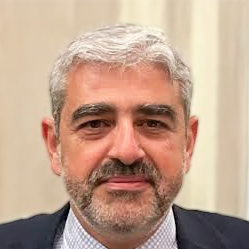
Nabil Bitar, CTO Head of Network Architecture, Bloomberg LP
Nabil Bitar holds BS, MS and PhD degrees in Electrical Engineering from Boston University, Boston, Massachusetts, USA. He is the CTO – Head of Network Architecture at Bloomberg LP working on WAN, enterprise, private and public cloud networking. Prior to his current position he was the CTO for the Large Enterprise & Webscale Segment at Nokia. and a fellow and director of Services and Network Architecture at Verizon. Nabil was also a principal engineer and architect at Ascend Communication (acquired by Lucent) working on routing and routing system control and data plane architecture, and a principal member of technical staff at GTE Laboratories working on IP, QoS, VoIP and wireless data and AIN. Nabil has been a frequent contributor to IETF in the areas of MPLS and Layer2 and Layer3 VPNs (21 FFCs, including EVPN) and a frequent contributor to the Broadband Forum. He held working group positions in the IETF, ONUG and OFC, and has been a frequent speaker at various fora. He has several refereed publications and conference presentations, and holds 30 patents in the various areas he worked on.

Mirko Voltolini, VP Innovation, Colt Technology

Daniel Bar-Lev, Chief Product Officer, MEF
As MEF’s Chief Product Officer, Daniel is responsible for the development and implementation of a range of strategic MEF programs that are central to MEF’s transformation to an agile-process oriented standards development organization defining, implementing and certifying MEF 3.0 services. These innovative programs – including SD-WAN definition and certification, MEF 3.0 Products, MEF 3.0 Proofs of Concept and the MEF Developer Community – enable MEF’s 200+ member companies to accelerate the transformation of their networks and operations to offer and deliver MEF 3.0 services. In addition, Daniel is responsible for MEF membership in the EMEA region, developing relationships and facilitating engagement of member companies in every aspect of MEF activities. Daniel has been involved in the networking industry for over 25 years holding a variety of positions in RAD Data Communications, as well as co-founding Resolute Networks where he held executive positions. Representing Resolute in the MEF, Daniel served for 3 years as MEF Global Marketing Co-Chair and was elected three times to the MEF Board of Directors. Since 2010, Daniel has been a senior member of the MEF staff.
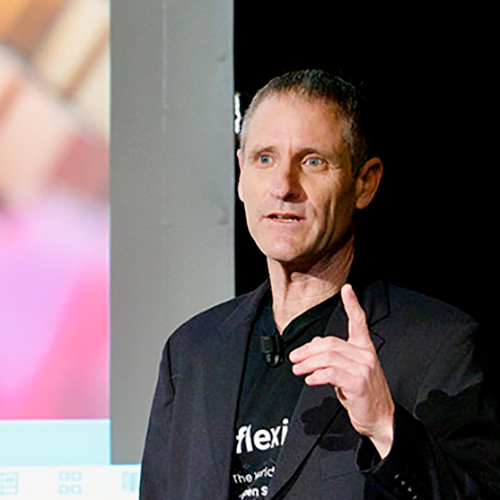
Chairman
Amir Zmora, CEO & Co-founder, flexiWAN
Covering the overall network management architecture, key technologies and extensions in the management plane, and the latest advances in standardization. Providing experience in network management deployments across different industries.

Giuseppe Fioccola, Senior Standardization Manager, Huawei Technologies
Giuseppe Fioccola is currently Senior Standardization Manager at Huawei Technologies since 2018. Prior to Huawei Technologies, he started his career at Telecom Italia in 2009 as Technical Project Manager. He has more than 10 years of experience in developing communication solutions and exploring new networking technologies. He is serving as chair of IETF BMWG (Benchmarking Methodology) Working Group and Ops Directorate (opsdir) Reviewer in IETF. He is author of 9 RFCs in IETF and contributed to more than 5 reports and specifications in ETSI. He authored 8 conference and journal papers. He also holds about 10 patents in the field of IP Network and Performance Measurement.

Prof. Pietro Cassarà, Research Staff, Council National Research
Dr. Pietro Cassarà is a Senior Researcher at the Institute of Information Science and Technology (ISTI) of the National Research Council (CNR). His research focuses on analyzing and designing AI-based control and management systems for telecommunications networks. In this field, he leads the AI for Networking group and the joint ISTI-Huawei laboratory at the ISTI. Dr. Cassarà has collaborated with international institutions such as NATO's Centre for Maritime Research and Experimentation (CMRE) as a temporary research staff member, working on intelligent routing protocols for underwater wireless networks. He has also coordinated project activities in national and European projects on AI-driven network management and has led Proof of Concept (PoC) initiatives within ETSI, exploring the application of the SRv6 protocol alongside AI-based strategies for IPRAN management. Beyond his research activities, Dr. Cassarà serves as an editor for journals and actively contributes to the organization of conferences, as well as teaching activities in Computer Science and Applied Mathematics at the University of Pisa.
Introducing a new router on the network is a challenge in a sustainable network. Exploring the complexity of the network design when taking into account the sustainability criterias in the choice of the router.

Etienne Roux, IP Network Engineer, Orange
Etienne Roux began to work on routers at the GÉANT2 NOC, he continued his carrier at Bouygues Telecom and finally came at Orange. He works in the RBCI (AS3215) engineering team since 2011 and is focus on the backhaul and services for ISP and customers. Beside his work at Orange, he is also the deputy mayor of his village in charge of youth, school and library.
Examining the state-of-art in terms of reducing power consumption of individual components within a router, and powering down unused components automatically. We then take a network-wide viewpoint and describe advanced traffic-engineering techniques to route traffic in a power-efficient manner across the network.

Julian Lucek, Senior Distinguished Systems Engineer, Juniper Networks
Julian Lucek is a Sr Distinguished Systems Engineer at Juniper Networks, where he has been working with many operators on the design and evolution of their networks. Before joining Juniper Networks, he worked at BT. He has a PhD in ultrahigh-speed optical transmission and processing from Cambridge University. He also has a Master's/Bachelor’s degree in Physics from Cambridge University. He is the holder of several patents in the area of communications technology. He is co-author of the book "MPLS-Enabled Applications: Emerging Developments and New Technologies", by Ina Minei and Julian Lucek.
What is meant by Hyperscale routing? What attributes make a router a good fit for this space? Is there a role for optical switching? This presentation explores the use routing and optical switching for AI traffic patterns.

Gary Swinkels, Distinguished Architect, Ciena
Gary Swinkels is a Ciena Distinguished Engineer and is responsible for the technical definition, direction and architecture across Ciena products and solutions. He is currently responsible for disaggregated router product family and the coherent routing solution. Gary has more than 35 years of experience in delivering networking products using a variety of networking technologies, often involving multi-layer and multi-domain interaction. Gary has a Bachelor of Science (BSc) degree from the University of Western Ontario. He holds more than 60 patents.
FIB in the data plane needs to meet performance, scale and work seamlessly during changes. Performance is not easy to achieve with simple Table lookups due to memory bandwidth limits. Solving this by using Bloom Filter, achieveing FIB scale and resolving race conditions in the data plane during route changes.

Krzysztof Grzegorz Szarkowicz, AWAN PLM, Solutions Architect, Juniper Networks
Krzysztof Grzegorz Szarkowicz is a Solution Architect at Juniper Networks, concentrating on mobile transport solutions, and has been working with the networking industry 20+ years, delivering projects at many operators world-wide. Before joining Juniper Networks in 2007, he worked with Hewlett Packard Labs, Telia Research, Ericsson, and Cisco. During that time he gained valuable hands-on experience at various aspects of networking, culminating in gaining CCIE-SP and JNCIE-SP certifications. He is co-author of the O’Reilly book “MPLS in the SDN Era", by Antonio Sánchez-Monge and Krzysztof Grzegorz Szarkowicz, as well as “Day One: Configuring Segment Routing with Junos” by Julian Lucek and Krzysztof Grzegorz Szarkowicz. At present, he is active contributing member of O-RAN WG9 (Open X-haul Transport) co-authoring WG9's architectural documents.
Demonstrating how the new architecture for the KPN infrastructure, in which functionality are distributed as much as possible to the edge (but not yet over), and use SRv6 as the new underlay, allow to scale and distribute functions further out. Even over the edge?

Eduard Metz, Network Architect, KPN
Eduard Metz is a Network Architect at KPN, responsible for the architecture of KPN's packet network infrastructure. Eduard has been working on packet network architectures since 1996, most of this time with KPN. Currently, he is working on a large network transformation within KPN.
- The impact of AI edge applications on IP network evolution and the emerging market opportunities
- The role and requirements of IP networks in delivering the value of AI applications to end users
- The IP technologies and system requirements essential for enabling AI edge inferencing deployments

Arnold Jansen, Senior Marketing Manager, Nokia
Arnold is responsible for marketing IP network products and solutions at Nokia. During his 35 years in the telecommunications industry, Arnold held various roles in engineering, research and innovation, product management, sales and marketing. Arnold is based in Ottawa, Canada and holds a bachelor’s degree in computer science from the Rotterdam University of Applied Sciences.
Introducing the architecture, implementation, and industry progress of the intelligent computing edge inference network, including better load balancing among multiple edge clouds based on the Computing-Aware Traffic Steering (CATS) and access to edge computing resources through specified paths using SRv6.

Cheng Li, Senior IP Standards Representative, Huawei Technologies
Cheng Li is responsible for SRv6, CUPS, CAN related standards, author of books "SRv6 Network Programming: Ushering in an new era of IP" and "Reconstructing the Network: SDN Architecture and Implementation
Edge cloud empowers a Communication Services Provider to expand their service portfolio, unveiling innovative approaches that enable value added services for subscribers and improve their quality of experience.

Kashif Islam, Principal Telco Architect, Red Hat
Kashif Islam is a Principal Telecommunication Architect in Red Hat’s consulting organization and help service providers transform their existing mobile infrastructure into next-generation cloud-native 5G networks Kashif is a 20+ year veteran in the IT industry and has architected several complex, large-scale networks for some of the biggest wireline and mobile service providers across the world. He is also an O-RAN alliance contributor and co-authored O-RAN xHaul Packet Switched Architectures and Solutions specification. Kashif has also co-authored a book titled "A Network Architect's Guide to 5G”, which is the first book to cover mobile core, RAN, and transport technology fundamentals and network design details. Kashif is Certified Kubernetes Administrator (CKA) and a double CCIE (#14300) in Data Centers and Routing/Switching Technologies. He holds a Bachelor degree from Sir Syed University (Pakistan), as well as a Master of Engineering in Internetworking degree from Dalhousie University, Canada.
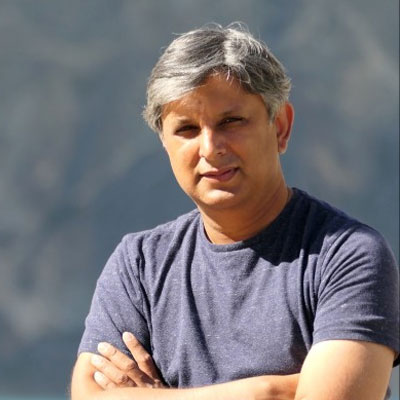
Syed Hassan, Principal Telco Architect, Red Hat
Syed Hassan has been designing and deploying networks for over 20 years. In his current role as principal telecommunications architect at Red Hat, Syed provides consultancy services to global 5G customers. Prior to that, Syed worked as a senior solutions architect in the Cisco professional and consulting services organization, providing guidance, strategy, and planning support to various Internet, cloud, and mobile service providers in their adoption of innovating networking technologies and transformation of their networks to new architectures. Syed co-authored one of the first books on NFV and SDN, has been a regular speaker in public forums and conferences, and is recognized as a Cisco Live Distinguished Speaker. Syed is a double CCIE in Service Provider and Data Center technologies (#21617), Google Certified Professional Cloud Networking Engineer, and Certified Kubernetes Administrator (CKA). He holds a bachelor’s degree in engineering from NED University (Pakistan) and a master’s degree in engineering from the University of Florida, Gainesville (USA).
How Next-gen metropolitan networks tackle service challenges from 5G, AI, and cloud applications. With SDN, SRv6, and AI automation, they become more scalable, intelligent, and secure. Best practices in cloud integration and zero-trust security ensure high performance and adaptability for future connectivity.
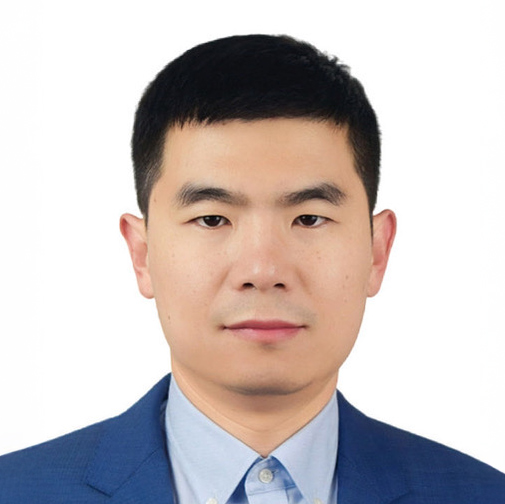
Felix Liu, European Regional CTO, H3C
Felix Liu is in charge of regional go to market strategy and Telco business development for H3C.
Discussing challenges such as multi-vendor networks and current solutions that use newer technologies, router implementations and a Software layer-based approach that enables Software defined networking. Advances in network router programmability including OpenConfig based interfaces, simplified path control using segment routing and the SDN Controller layer to abstract the network are covered.
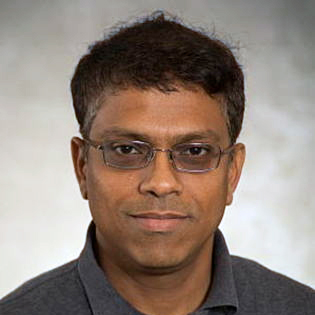
Krishnan Thirukonda, Principal Engineer, Cisco
Krishnan Thirukonda is a Principal Engineer with Cisco Systems currently focusing on Large Scale network automation and analytics technologies. Krishnan has extensive background in network automation, and is a networking veteran with previous experience in routing, mpls and IPv6 technologies as well as Cisco data center and virtualization solutions.
Complex multi-layer networks can benefit from the application of Generative AI (GenAI) and multi-agent Large Language Models (LLMs) to automate the detection, analysis, and resolution of issues, for improved reliability and operational efficiency. Multi-agent systems facilitate collaborative problem-solving, whereby autonomous agents interact and share insights to pinpoint and address faults across both IP and optical layers.
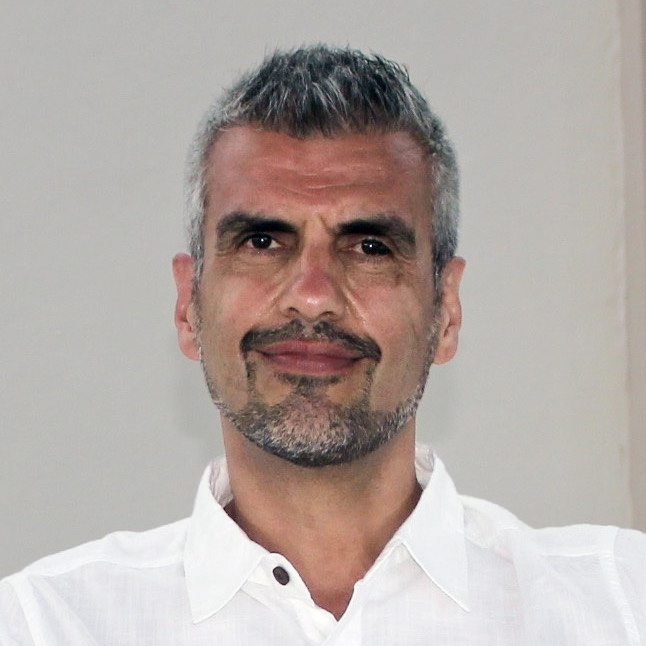
Reza Rokui, Senior Director, SDN Application Architect, Ciena
As senior director SDN architect PLM, Reza is tasked with shaping and implementing Ciena’s vision for IP and Optical applications within a multi-vendor, multi-layer converged network, specifically the Ciena Coherent Routing vision. He is responsible to take the convergence vision to the next level by delivering an industry first true multi-layer IP over Optical transport solution. Reza is also leading AIOps efforts, utilizing AI/Gen-AI technologies and advanced algorithms to implement streamline operations and improve delivering impactful solutions powered by artificial intelligence for assurance, optimization and automation of multi-layer IP over DWDM networks. Reza brings over two decades of experience in the telecommunications industry in IP/MPLS/SDN/Optical product management, software engineering, and R&D. He is active at IETF and has co-authored several standard documents for IETF and BBF. Reza earned his Ph.D. in Control and Robotics from Concordia University in Canada.
TeraFlowSDN, an open-source platform, has been upgraded to automatically monitor and manage 5G/6G networks with minimal human intervention—also known as a “zero-touch” approach. All features are built on a flexible, cloud-friendly design, ensuring TeraFlowSDN can handle massive amounts of data. By blending cutting-edge technology with open-source principles, TeraFlowSDN is paving the way for future-ready, self-managing networks.

Waleed Akbar, ETSI SDG TFS Main Contributor on Network Automation, CTTC Researcher
Waleed Akbar (PhD) is a researcher at CTTC in Barcelona, where his work concentrates on SDN/NFV, network virtualization, big data, data collection, network automation, energy efficiency, and 5G-Advanced networks. He has accumulated considerable experience in both industrial and research projects. Notably, he contributed to the ETSI TeraFlowSDN initiative by designing and planning closed-loop automation, as well as developing data collection, analysis, and automation services. In addition, his contributions to network automation in TeraFlowSDN will play a key role in the FLEX-SCALE and PROTEUS-6G projects, focusing on energy efficiency. Beyond this, Dr. Akbar has hands-on experience in deploying energy monitoring systems on CTTC’s ADRENALINE testbed®, an SDN/NFV packet/optical transport network and edge/core cloud platform for end-to-end 5G and IoT services. His responsibilities in the testbed include designing and implementing domain-specific agents for energy measurement collection, which enabled the validation and verification of SLAs and policies to meet QoS requirements. He also has contributed to standardization efforts through his participation in the ETSI Industry Specification Group (ISG) Fifth Generation Fixed Network (F5G). There, he has proposed standardize approaches for obtaining and analyzing energy data in real time, ensuring operators have accurate insights to enhance energy efficiency. Dr. Akbar earned his PhD in computer engineering in 2023 from Jeju National University, South Korea, with a thesis centered on designing, developing, and implementing a proof-of-concept for Software Defined Infrastructure, intent-based systems, and zero-trust networks.
A new breed of services (e.g. VR, AR) have emerged demanding more careful consideration of latency and jitter, as relevant parameters to ensure correct service delivery. This requires to define, measure and enforce latency as crucial network KPIs.

Luis Miguel Contreras, Technology Expert at Global CTIO Unit, Telefónica
Dr. Luis M. Contreras holds an M.Sc. in Telecommunications from the Universidad Politécnica de Madrid (1997), an M. Sc. in Telematics jointly from the Universidad Carlos III de Madrid and the Universitat Politècnica de Catalunya (2010), and a Ph.D. in Telematics from the Universidad Carlos III de Madrid (2021). In 1997 he joined Alcatel, Spain, taking several positions (R&D, standardization, product development and customer engineering). In 2006 he joined the network planning department of Orange, Spain. Between 2002 and 2010 he was also adjunct lecturer at the Telematics department of the Universidad Carlos III. Since August 2011 he is part of Telefónica working on scalable networks and their interaction with cloud and distributed services. He is an active contributor to different SDOs, such as IETF, O-RAN, ETSI, etc.
The Network Performance Measurement (NPM) toolkit for accurate latency and loss measurements, connectivity verification as well as recording packet path, enable network operators to provide strict SLAs. The IETF standards-based toolkit using Simple Two-Way Active Performance Measurement (STAMP) and its extensions for IPv6 and MPLS data planes are essential for seamless performance monitoring.
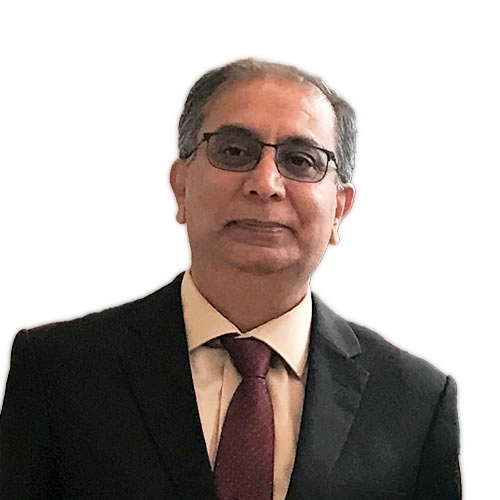
Rakesh Gandhi, Principal Engineer, Cisco
Rakesh Gandhi is a Principal Software Engineer in Cisco's Internet Routing Group where he is innovating and leading development of Software for Network Performance Measurement and Streaming Telemetry that enable AI for Networks. Rakesh is also an active contributor at IETF Standards, is co-author of 14 RFCs and over 16 WG documents. He has filed over 50 Patents in the USA and has a number of publications in the field of telecommunications networks.
Showing how a border node can use a context table to automatically filter all labels that have not been previously advertised to a specific neighbor via BGP-LU, thus creating an effective MPLS label anti-spoofing mechanism. Describing how context tables for MPLS labels help improve convergence times, and address scalability in larger networks.
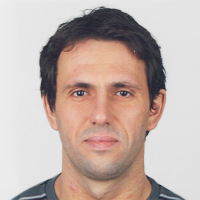
Anton Elita, Technical Solutions Architect in Routing and Automation, EMEA, Juniper Networks
Anton Elita is a Technical Solution Architect at Juniper Networks, specializing in automation and routing, with over 20 years of experience in the networking industry. Before joining Juniper Networks in 2013, Anton held senior network engineer roles at various internet service providers. His extensive hands-on experience continues to play a crucial role in his current work as a solutionarchitect, where he collaborates with major service providers across the EMEA region. He is a holder of JNCIE-SP certification.
Offering a deep technical dive into the nature of modern DDoS attacks and discussing recent cyberattacks on commercial and government targets, especially from groups like Russia-affiliated NoName, highlighting the pressing need for adaptive DDoS defence strategies.

Jerome Meyer, Deepfield Security Researcher, Nokia
In his current role, Jérôme drives DDoS security research & competence development at Nokia, as part of its Deepfield portfolio of network security & analytics. Based out of Paris, he joined the company’s Mobile Networks organization in 2005 in Malaysia; and he since covered a variety of sales & pre-sales responsibilities in the Asia-Pacific region, before returning to Europe in 2023. Jérôme graduated with a Master’s degree from the Institut National des Sciences Appliquées in Lyon, France.
Scenarios such as massive sample calculation and remote training pose new requirements on bearer networks. Introducing how AI WAN enables elastic and lossless intelligent WANs.

Dr Meiyu Qi, Network Routing Algorithms Research Senior Expert, Huawei Technologies
Qi Meiyu is the director of Network routing technology lab, which is responsible router related clients collaborations and technological innovation. She has been continuously committed to the research of network scheduling and optimization algorithms. Recently, she has made breakthroughs in the innovation of WAN for AI, focusing on the research of efficient big data cross clouds and long-distance large model training across data centers, and has completed verification in the customer's real network.
Some major mobile operators have been discussing a new user plane architecture that optimizes both the data plane and signaling. The architecture is also unified for both wireless and wireline networks, allowing for the seamless integration of wireline/wireless services. Discussing the user plane evolution and the new architecture.
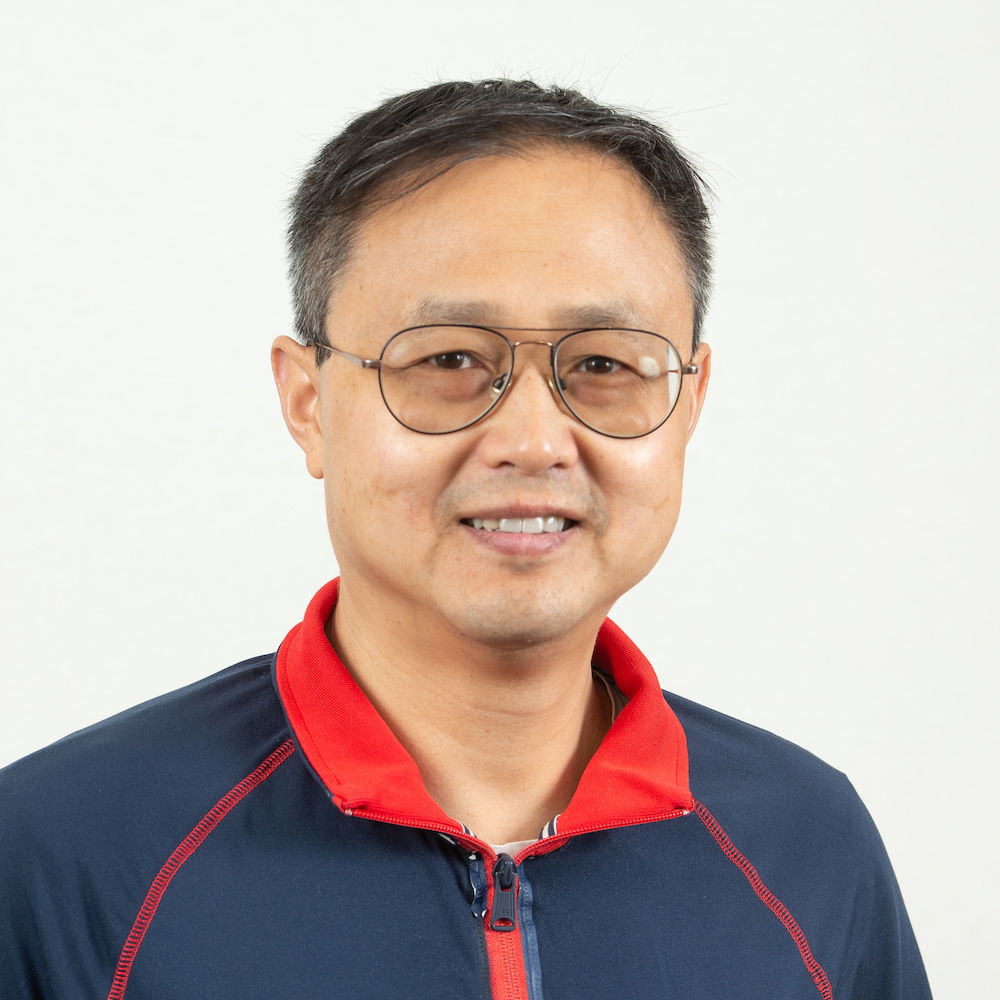
Jeffrey Zhang, Distinguished Engineer, Juniper Networks
Jeffrey (Zhaohui) Zhang is a Distinguished Engineer in Juniper Networks' routing protocols team. He has worked on routing technologies for over 30 years, from OSPF/BGP/LDP/RSVP, MPLS-TE, MPLS/BGP-enabled services, to Multicast (PIM/MVPN/EVPN), VPLS/EVPN, RIFT, Segment Routing, and Mobile User Plane. Jeffrey Zhang is an active IETF participant who co-chairs the RIFT and BESS WGs in the IETF.
Demonstrating how network intelligence captures end-to-end user experience data per cell, application, and user level. Discussing various use cases like network performance monitoring, customer care, and CAPEX planning.
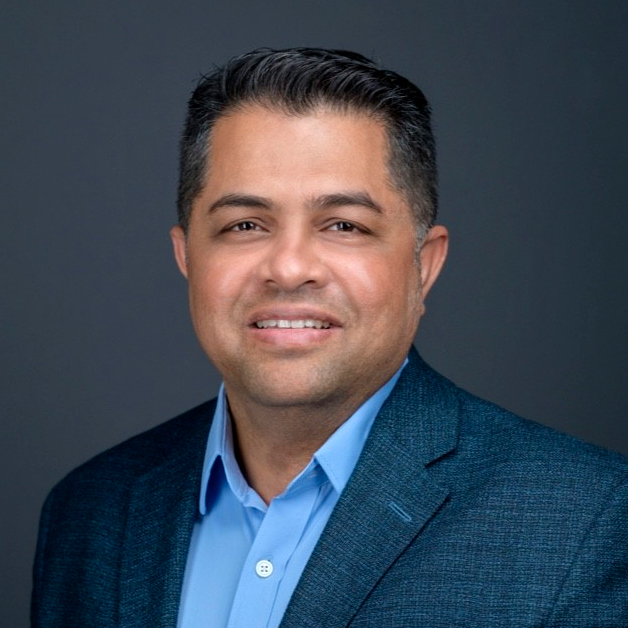
Waris Sagheer, Director, Product Management, Cisco
Waris Sagheer is the Senior Director of Product Management at Cisco's Data Center and Provider Connectivity Group. With over two decades of experience in the service provider sector, Waris is a seasoned expert in service provider architecture and related technologies. His extensive skill set in product management, customer experience, and engineering has driven innovation and technological advancements across Cisco's Service Provider portfolio and solutions.


